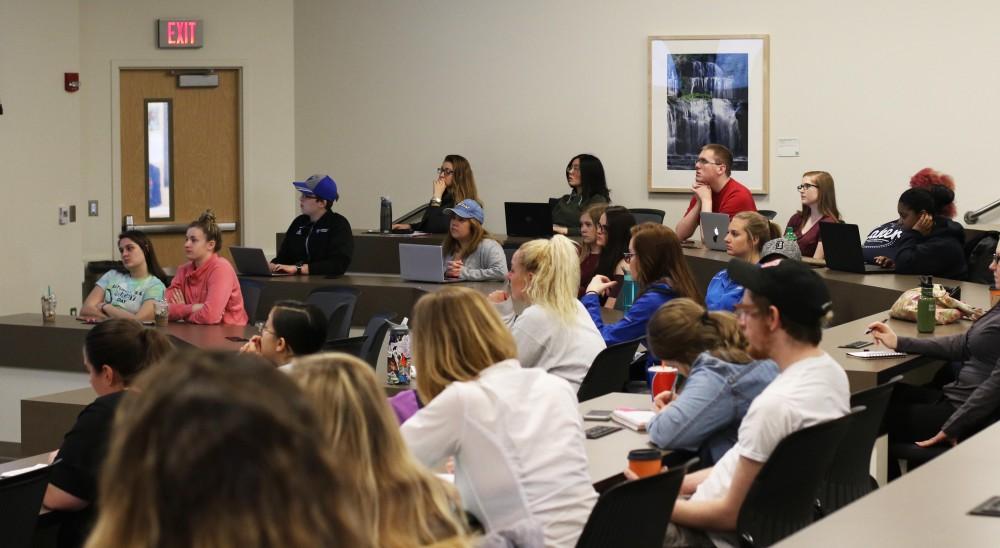Looking at the relationship between music and sociology

GVL/Meghan McBrady – Students gather to listen to the talk by Omar Lizardo, a professor of sociology at the University of Notre Dame, who spoke Friday, March 24, 2017 at the P. Douglas Kindschi Hall of Science.
Mar 27, 2017
What makes people enjoy their favorite genre of music? Is it because of the melody or artist, or is it because of gender, race or even their age?
Omar Lizardo, a professor of sociology at the University of Notre Dame, spoke Friday, March 24, at the P. Douglas Kindschi Hall of Science about why music is a significant topic in sociology.
Addressing over 50 members of the Grand Valley State University community for “Cultural Objects as Prisms: Perceived Audience Composition of Musical Genres as a Resource for Symbolic Exclusion,” Lizardo explored why individuals from different social groups dislike and/or like certain musical genres.
“The topic that I’m going to talk about is taste, which is one of the areas that I focus on,” he said. “In terms of how sociologists kind of enter this field, right, they kind of have to provide an answer that is sometimes a little different from the (standard) answer right here.”
Joel Stillerman, a sociology professor at GVSU, introduced Lizardo at the Friday event. He said Lizardo’s research in cognitive science, social psychology and cultural sociology demonstrates how “he is a very, very accomplished scholar.”
“He is very curious about a lot of different areas in our discipline,” he said. “We tend to gear toward (very) evidence-based or kind of empirical research or all theory. He’s someone that’s done a lot of theory and empirical articles, and that’s kind of an interesting combination.”
Touching upon how social features in music are connected to perception of object and group linkage—like heavy metal music is associated with males and blues music is associated with African-Americans—Lizardo said cultural objectification deals with meaning.
With an emphasis on what cultural likes and dislikes reveal in music, Lizardo discussed qualitative and relational features.
Qualitative features emphasize the “why” and “how” of decision-making. Relational features stress the social ties, interactions and conversations in an individual’s daily life.
With music, if an individual responds to qualitative features, Lizardo said, then the likes and dislikes reveal personal preferences.
In contrast, when an individual responds to relational features with music, the likes and dislikes will reveal exclusion or inclusion and divisions in “social spaces.”
“Relational features might be like connections to the audience that it has,” Lizardo said. “Social (relational) features of objects matter in terms of what they mean and with the information that we have but also look at how we engage over time.”
Michaelyn Mankel, a sociology major at GVSU, asked Lizardo during the Q&A session about the design of his study. Primarily, she asked about the literature he used in his research and about dominant cultures and their associations between social categories and genre.
“Do you think that kind of scholarship would be crucial if we accept that music is one of those areas of cultural objects that doesn’t rely as heavily or isn’t as heavily dictated by consumption and patterns or capabilities?” she said.
In response, Lizardo said certain things will be taken from how music genre categories are consumed and conceptualized by society. It is taken from art, he said.
“We have something like classical music and to some extent opera, both of whom by historical accounts were the pop genre in the 18th and 19th centuries,” he said. “It really became refined as a genre in the early 20th century.”
For more information about events in GVSU’s sociology department, visit www.gvsu.edu/sociology/.

























